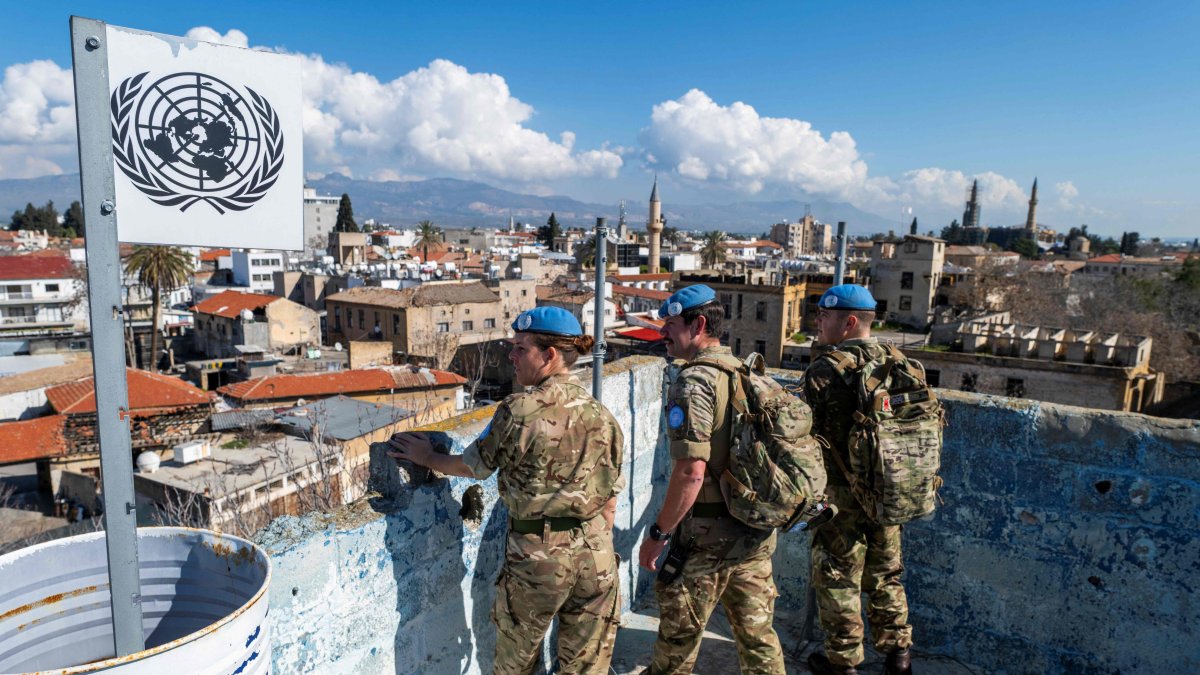Cyprus: Strategic imperative for 2-state solution
Source: DAILYSABAH
The upcoming political period in the Turkish Republic of Northern Cyprus (TRNC) necessitates a thorough analysis of the island’s future status, prioritizing the security and long-term viability of the Turkish Cypriot people over decades of failed integration attempts. The fundamental reasons why the Turkish Cypriot side considers the federal solution model dangerous and structurally obsolete, and views the two-state solution as the only necessary, pragmatic and sustainable path forward, deserve to be underlined.
Why federalism is dangerous
The profound strategic reluctance of Turkish Cypriots to reenter a federal framework stems directly from the catastrophic failure of the 1960 Partnership Republic and the subsequent systematic attempts at annihilation and exclusion.
The 1960 republic was established as a unique (sui generis) state model based on the political equality of two founding partners – Turkish Cypriots and Greek Cypriots – not a majority and a minority. This partnership collapsed violently after only three years because the Greek Cypriot leadership, notably Archbishop Makarios, viewed the agreements not as a final goal, but as a “temporary” obstacle on the path to Enosis (union with Greece).
This objective was pursued through systemic violence, known as the “Bloody Christmas” attacks (starting December 1963) and formalized under the secret Akritas Plan. Turkish Cypriots were forcibly ejected from all state organs – legislative, judicial and executive – in a constitutional crisis that led to the island’s de facto division in 1964. The United Nations later acknowledged that Turkish Cypriots were subjected to economic restrictions amounting to “a veritable siege.” For Turkish Cypriots, Türkiye’s 1974 military intervention was therefore not an invasion, but a legitimate response based on the 1960 Treaty of Guarantee, saving the community from total destruction following the Greek-backed coup.
A successful federation requires a degree of shared identity and political consensus, yet “a single ‘Cypriot nation’ has never existed throughout history.” Archbishop Makarios himself confirmed this, stating in 1963 that the agreements created “a State, but did not create a Nation.”
Crucially, structural analyses suggest that power-sharing fails when deeply concentrated, non-overlapping identities exist. In Cyprus, the concentration of Orthodox Greeks in the south and Muslim Turks in the north eliminates the “crosscutting of cleavages” needed to mitigate conflict.
Furthermore, security remains the biggest obstacle: the Greek Cypriot side insists on the complete removal of Türkiye’s 1960 guarantee. Given the historical violence, the continuation of Türkiye’s “effective and actual guarantee” is seen by the Turkish side as an “indispensable” element of national security. Any attempt at a federal solution that jeopardizes this fundamental guarantee is deemed an unacceptable risk.
Necessity of a two-state solution
The two-state model is advocated as the only realistic, fair and sustainable option because it is grounded in the established political and security facts on the island.
Decades of continuous negotiations have repeatedly failed due to the Greek Cypriot side’s refusal to accept Turkish Cypriots as politically equal partners, insisting on retaining the sovereignty of the 1960 state. The rejection of the comprehensive 2004 Annan Plan by the Greek Cypriot side (76% rejection) and the subsequent collapse of the 2017 Crans-Montana Conference demonstrated that the federal model is exhausted.
The two-state vision is based on recognizing the island’s functional reality: “In Cyprus, there are two separate peoples, two separate democracies, and two separate states.” The Turkish Republic of Northern Cyprus (TRNC) meets all four criteria of statehood as defined by the 1933 Montevideo Convention (permanent population, defined territory, effective government and capacity to enter into relations), even if it lacks formal international recognition. The logic is clear: If an agreement through negotiation cannot be reached, the “long years of a de facto situation will inevitably lead to international recognition and partition.”
Since history proves that political equality and security cannot be maintained within a single state structure, the solution must be to formalize the sovereign equality between two independent entities. The systemic exclusion and severe human rights violations suffered by Turkish Cypriots between 1963 and 1974 provide a legal-moral basis for the doctrine of “remedial secession,” which argues that a people has the right to separate when internal self-determination has been systematically denied. The Turkish side demands that the international community guarantee the “sovereign equality and equal international status” of the Turkish Cypriot people as a prerequisite for any further negotiation.
Consequently, the insistence on the federal model, despite its historical failure and the unacceptable security risks it poses to Turkish Cypriots, represents a continuation of an unjust status quo. The two-state solution is the logical response to the reality on the ground, offering the security, political equality and economic pragmatism denied under previous structures.
The original article: belongs to DAILYSABAH .


